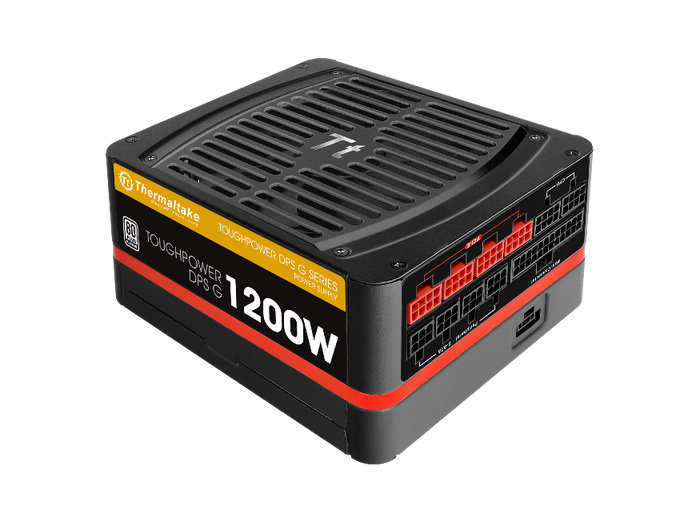Thermaltake has extended the list of power supply units it offers with three new models that carry the Toughpower DPS G Platinum brand names. The new power supply units target power users who need PSUs with high quality components inside and provide 850W, 1050W and 1200W of power output.
The new Toughpower DPS G Platinum power supply units share some of the tech specs with other DPS G PSUs – for instance, they feature a 32-bit microcontroller unit (MCU) that monitors various aspects of the system and gives users advanced control over their Toughpower DPS G Platinum PSU. The MCU provides statistical information on the efficiency and power consumption of the PSU and monitors its work so in the case of an unexpected phenomenon such as overheating it can reduce its power output in order to prevent a failure with negative consequences for both the computer and the user behind it. In addition to this the information from the MCU is uploaded to Thermaltake servers every six hours and you can access it by using a smartphone or other PC software. The information is also available online.
The new Toughpower DPS G Platinum PSUs feature Platinum-level efficiency as the brand name suggests and sport fully modular cable designs, 100 per cent Japanese capacitors and 140 mm fans that keep the PSU internals cool. The PSUs offer a single 12V rail, the so-called 3 oz Copper PCB technology, which places more copper elements in the PCB for improved reliability and lower temperatures, Power Factor Correction and 120 000 hours of mean time before failure (MTBF). The 850W model offers ATX, EPS12V 8-pin, EPS12V (4+4)-pin, 6x PCI-E Power (6+2)-pin, 12x SATA Power, 4x Molex 4-pin, and a FDD Power connector, while the 1050W model comes with ATX, EPS12V 8-pin, EPS12V (4+4)-pin, 8x PCI-E Power (6+2)-pin, 12x SATA Power, 8x Molex 4-pin and 2x FDD Power connectors. The most powerful 1200W model has the same number and type of connectors as the 1050W model.
All three new Thermaltake PSUs come with a 7-year warranty. No word on pricing as of now.
Source: Tom’s Hardware

